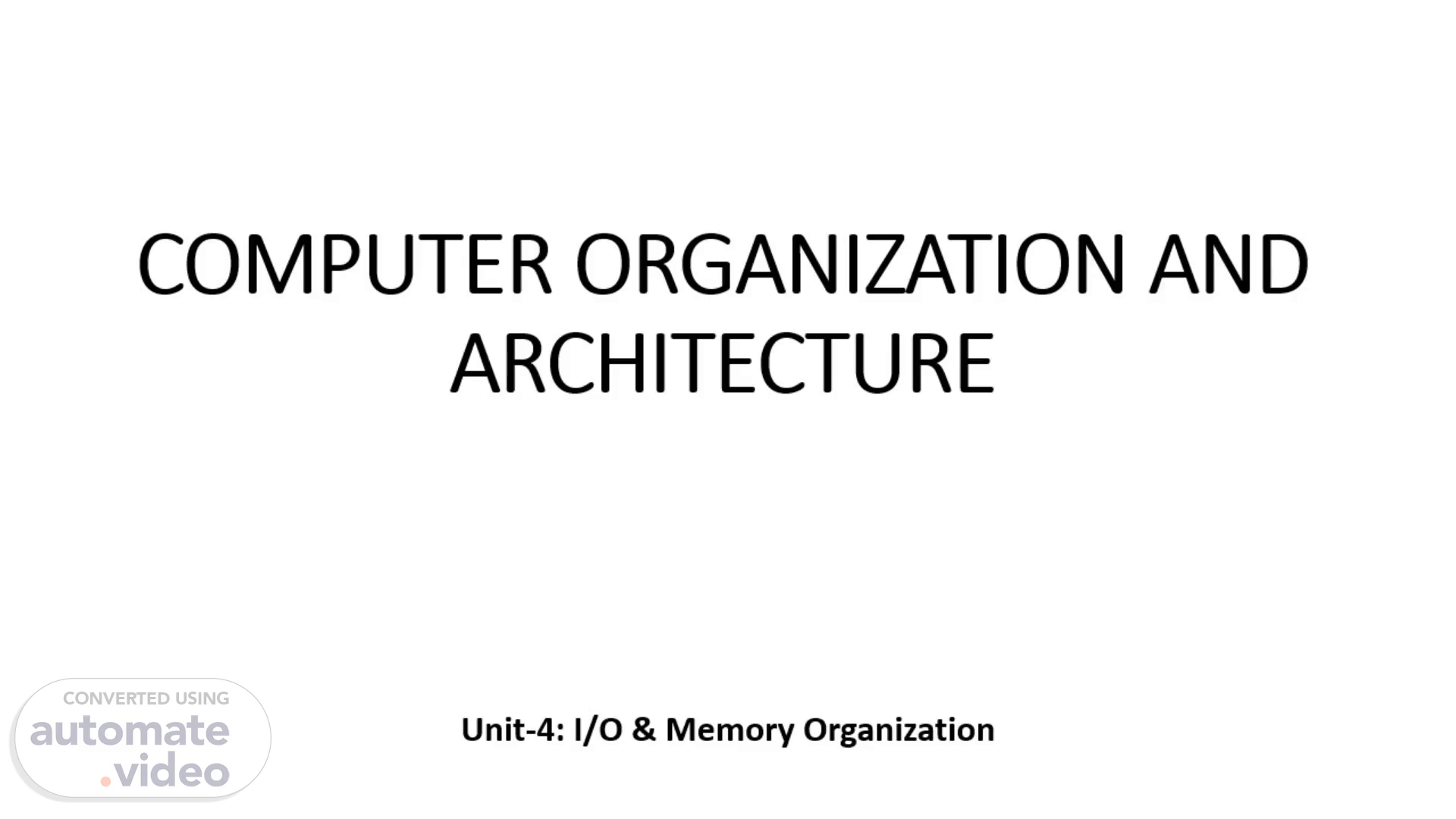Scene 1 (0s)
[Audio] COMPUTER ORGANIZATION AND ARCHITECTURE Unit-4: I/O & Memory Organization.
Scene 2 (7s)
[Audio] Introduction The input-output subsystem of a computer provides efficient mode of communication between central system and outside environment Most common method of entering information into a computer is through a keyboard The devices that are under direct control of the computer are said to be connected online. These devices read information into or out of the memory unit upon commands form CPU and are considered to be part of the computer system The I/O devices attached to the CPU are called peripherals 10-11-2025.
Scene 3 (45s)
[Audio] I/O Interface Provides a way for transferring information between internal storage and external I/O devices. Peripheral devices require a communication link for interfacing them with CPU The purpose of the communication link is to resolve the differences between CPU and each peripheral device..
Scene 4 (1m 23s)
[Audio] To resolve the differences, computer systems have special hardware components between the CPU and peripheral devices to supervise and synchronize the input and output transfers. These components are called interface units. Each interface decodes the address and control received from the I/O bus, interprets them and provides signals for peripheral controllers.
Scene 5 (1m 47s)
[Audio] The I/O bus from the processor is attached to all peripheral interfaces To communicate with a particular device, the processor places a device address on the address lines. Each interface contains an address decoder that monitors the address lines. When interface detects its own address, it activates the path between the bus lines and device that it controls The address is made available in the address lines, the processor provides a function code in the control lines. The interface selected responds to the function code and proceeds to execute it Function code is referred to as an I/O command and is an instruction that is executed in the interface and its attached peripheral unit.
Scene 6 (2m 31s)
[Audio] A control command is issued to activate the peripheral and to inform it what to do A status command is used to test various status conditions in the interface and the peripheral A data output command causes the interface to respond by transferring data from the bus into one of its registers During the data input command, the interface receives an item of data from the peripheral and places it in its buffer register.
